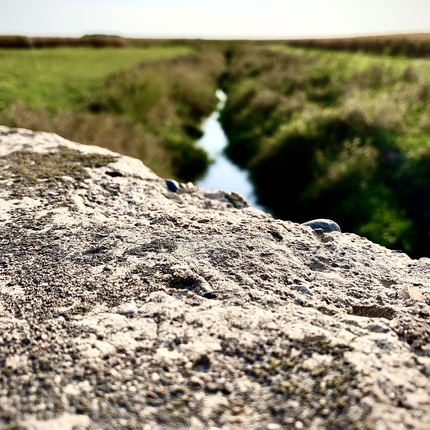By Cody Smith, former staff member
Over the past eight years, Iowa has invested millions of public dollars toward the goals of the Iowa Nutrient Reduction Strategy which aims to reduce nutrient loss in the state’s waterways by 45 percent by 2035. Based on peer-reviewed science that lists a menu of in-field and edge-of-field water quality improvement practices, public infrastructure upgrades, and a variety of other management practices, the strategy has guided the state’s efforts for nearly a decade.
Now, several years in, Iowans are rightly asking if the water quality improvements they’ve seen are happening quick enough.
Legislators face the same question. What’s next? How do we accelerate progress? We believe the answers to those questions rest within Iowa’s watersheds, not in Des Moines. The time has come for Iowa to invest in watershed coordinators, who are the boots on the ground across the state doing the work of implementing more water quality and flood mitigation practices.
To demonstrate the success of granting long-term, sustainable funding of watershed coordinators, the Center has developed the Watershed Advancements That Enhance Resources (WATER) Pilot Program. The program would authorize the Department of Agriculture and Land Stewardship to competitively grant three, three-year grants of $300,000 to eligible watershed management authorities to cover the expenses of staffing a full-time watershed coordinator.
Watershed management authorities are voluntary, intergovernmental partnerships between cities, counties, and soil and water conservation districts and are organized along hydrologic unit code (HUC)-8 watershed boundaries instead of political lines. These locally-directed partnerships provide a unique structure that brings together all stakeholders who live in the watershed—such as landowners, farmers, city planners, county engineers, and road departments—ensuring all jurisdictions are working together to achieve improved water quality and reduced flooding impacts.
By putting Iowa’s local leaders in the driver’s seat when it comes to setting goals and achieving progress toward the state’s water quality and flood mitigation targets, the WATER Pilot Program leverages local control to jumpstart progress.
Granting state funding to cover the expenses of staffing allows watershed coordinators to shift their focus from securing funding to keep their jobs to maximizing all available sources of funding to achieve practice implementation. Furthermore, of the existing 26 watershed management authorities, several do not have the resources to staff a full-time watershed coordinator, leaving them to find other employees with related duties to coordinate the authority’s activities.
Funding for flood mitigation, water quality, and outdoor recreation projects often comes from a patchwork of sources, including grants and loans from private foundations, as well as local, state, and federal government programs. Empowering watershed coordinators to focus on project implementation helps achieve more practices going on the landscape and directly correlates to improvements in water quality and flood conditions.
By understanding the conditions of the watershed and developing relationships with farmers, landowners, city, and county leaders, watershed coordinators make certain tax dollars are spent in the areas where they have the most significant impact, ensuring the greatest return on investment for Iowa’s taxpayers. Meanwhile, the WATER Pilot Program would alleviate local governments of staffing costs, which allows resources to be shifted to goal-setting and project implementation while also creating a sustainable statewide career path for natural resources professionals.
When given the resources, watershed coordinators can also play a key role in economic development in rural areas by spending their time searching for opportunities to leverage the natural resources within the watershed for economic investment. Opportunities may include expanding access to outdoor recreation.
In all, the WATER Pilot Program leverages local control to empower rural Iowans to develop and implement solutions that work best for their communities. If the state aims to scale up the adoption of water quality and flood mitigation practices and, therefore, accelerate progress toward the goals of the Iowa Nutrient Reduction Strategy, it’s past time we invest in the boots on the ground doing the work.





